|
Displaying items by tag: Museum

Renowned art collector, Daphne Farago, announced that she will donate 161 works from her stunning collection to the Museum of Fine Arts, Boston. A longtime supporter of the MFA, Farago’s contribution is the largest gift of contemporary craft the museum has ever received and will greatly improve a once-lacking part of the collection.
Farago’s gift features works from the 20th and 21st centuries by artists such as Dale Chihuly (b. 1941), Sam Maloof (1916-2009), and John Cederquist (b. 1946). The pieces range from works of fiber, ceramics, glass, woodcarvings, and metal to furniture, jewelry, basketry, and folk art. The newly acquired works, man of which have remained out of public view until now, will be exhibited in the museum’s Farago Gallery beginning in August 2013.
This is the third major donation from Farago and her late husband, Peter to the MFA; their contributions total $2.5 million to $5 million in art and money, which prompted the museum to open the Farago Gallery in September 2011 as part of the Linde Family Wing for Contemporary Art. Edward Saywell, Chair of the Linde Family Wing, said, “Although the MFA has a distinguished history of collecting and exhibiting contemporary craft, this gift broadens and deepens our holdings in truly significant ways. The gift will be a touchstone for the collection and will be a remarkable legacy.”
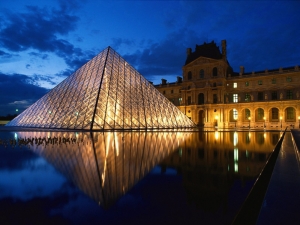
For the first time in the Louvre’s 220-year history, the search for a new chief for the museum may include non-French candidates. Public spending in France is being reduced by $13.4 billion this year and a candidate with expertise in international fundraising is crucial to the Louvre, which has led officials to broaden their search criteria. While French President Francois Hollande vowed not to cut cultural projects, the culture ministry’s budget was reduced by 2.3 percent for 2013.
The Louvre’s new director will be responsible for finding funds to expand the institution’s reception area; the area was built in the 1980s when the museum hosted 4 to 5 million visitors a year. The Louvre, the most visited museum in the world, now welcomes around 10 million visitors a year.
Talks regarding a new director for the Louvre began when the museum’s current chief, Henri Loyrette, announced his resignation on December 17, 2012. Hollande plans to have a new director in place when Loyrette’s twelve-year run at the helm of the institution ends in April.
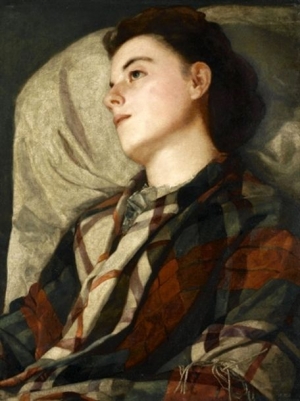
The Pennsylvania Academy of the Fine Arts (PAFA) is hosting Modern Women at PAFA: From Cassatt to O’Keeffe through September 1, 2013. The exhibition, which features 40 works by pioneering female artists, is a companion installation to the exhibition The Female Gaze: Women Artists Making Their World, which is on view through April 7, 2013.
Modern Women at PAFA includes both paintings and sculptures and explores themes such as motherhood and beauty, the natural landscape, self-portraiture, women in their community, women illustrators, and modern women in motion. Artists on view include Mary Cassatt (1844-1926), Georgia O’Keeffe (1887-1986), Violet Oakley (1874-1961), and Susan Macdowell Eakins (1851-1938).
PAFA has been a notable supporter of female artists since its inaugural exhibition in 1811, which featured works by Anna Claypoole Peale (1791-1878), Margaretta Angelica Peale (1795-1882), and Sarah Miriam Peale (1800-1885), all members of the Peale family of American painters descended from the miniaturist and still-life painter James Peale (1749-1831). By 1844 PAFA encouraged female students to participate in art classes, distinguishing itself as a leader in arts education for women. A number of important female artists including Cassatt, Cecilia Beaux (1885-1942), and Emily Clayton Bishop (1883-1912) went on to forge important relationships with PAFA as both students and instructors.

The Oakland Museum of California, which is devoted to the art, history, and natural science of California, was been burglarized for the second time in two months on Monday, January 7, 2013. During the first robbery, the thief made off with a number of objects and pieces of gold that were on view as part of an exhibition about California’s Gold Rush. This week, a thief stole a significant gold and quartz box from the same exhibition. The box, which features elaborate decorations depicting early pioneer life, could be worth as much as $800,000.
Officials believe that the most recent break-in was pre-meditated and that the burglar pinpointed specific items to steal, making their way in and out of the museum very quickly. Security camera footage confirms that the thief worked alone. Both recent burglaries occurred on Mondays, when the Oakland Museum is closed to the public. Officials are investigating whether or not the two crimes are connected.
A $12,000 reward is being offered for the safe recovery of the box, which officials fear could be melted down for its materials.

London’s Tate Modern announced that 5.3 million patrons visited the museum in 2012, a record for the institution. In fact, the number of visitors was up a considerable 9.5 percent from the previous year.
An exhibition devoted to the work of contemporary artist Damien Hirst (b. 1965), which ran from April 4 to September 9, 2012, contributed significantly to the Tate’s record attendance. The show, which featured some of the controversial artist’s best-known works, attracted 463,000 visitors making it the most popular solo show ever organized by the museum. The Tate’s recently opened performance space, The Tanks, also contributed to the increase in patrons. The Tanks, which opened in July, is a permanent space for not only performance, but installations and video art as well.
Tate Modern, which opened in 2000, is Britain’s national museum for modern and contemporary art. Located along the Thames River in the former Bankside Power Station, the museum expects another stellar year. Exhibitions planned for 2013 include a major retrospective of the pop artist Roy Lichtenstein (1923-1997) and a show devoted to Swiss-born painter Paul Klee (1879-1940).

It was recently revealed that a Joan Miró (1893-1983) painting, which was damaged while on view at the Tate Modern in London, cost British taxpayers $326,000 to repair. Part of the museum’s retrospective of the Spanish modern artist, Painting on White Background for the Cell of a Recluse I (1968), was damaged when a visitor placed both hands against the work to steady himself after tripping and falling in the museum.
A white canvas sliced by a delicately wavering gray line, Cell of a Recluse I is one of five rare triptychs by Miró, which were exhibited together for the first time during the Tate retrospective in 2011. The work was immediately repaired after the incident, which left the acrylic on canvas painting with dents and markings. Cell of a Recluse I was on loan to the Tate from Barcelona’s Joan Miró Foundation and the British government paid the Foundation over $300,000 to cover the repair costs for the painting and to account for any loss in the work’s value due to the incident.
The Tate has recently been responsible for a string of damaged artworks including Mark Rothko’s (1903-1970) Black on Maroon (1958), which was defaced by a visitor, an early work by Roy Lichtenstein (1923-1977) titled Whaam! (1963), which was also marred by a museum patron, and a portrait of Margaret Thatcher by Helmut Newton (1920-2004), which was damaged when a staff member slipped and cracked the photograph’s glass frame.

A painting by the Italian master Tiziano Vecellio (circa 1488/1490-1576), who is known in English as Titian, was recently discovered in London’s National Gallery. Located in Trafalgar Square, the museum houses the country’s collection of Western European paintings from the 13th to 19th centuries.
The portrait by Titian, a pivotal member of the 16th century Venetian school of painters, depicts Girolamo Fracastoro, a well-respected doctor at the time, draped in lynx fur. The National Gallery has owned the portrait of Fracastoro since 1924 but until recently attribution has been uncertain. The Fracastoro portrait underwent thorough restoration, revealing new information about the canvas and technique, prompting scholars and curators to uphold the attribution.
The painting is now being displayed as part of the National Gallery’s main collection. The portrait of Fracastoro is the third Titian painting to join the museum’s holdings since 2009 making the National Gallery’s Titian collection one of the finest in the world.
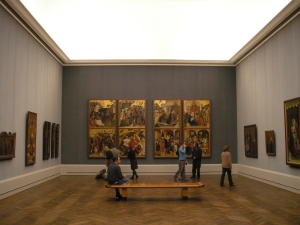
The fate of Berlin’s collection of Old Masters painting has been a source of controversy for nearly a year. While museum space in the city dwindles, the works are currently being held in the Gemäldegalerie, a museum devoted to European art from the 13th to 18th centuries, fueling concerns that the paintings may soon be banished to a storage facility.
German culture minister Bernd Neumann attempted to nix fears by reassuring the public that a new institution will be built to house the collection within five to six years. However, there is still some concern as to where the collection, which boasts masterworks by Rembrandt (1606-1669), Sandro Boticelli (1445-1510), Johannes Vermeer (1632-1675), and Peter Paul Rubens (1577-1640), will be exhibited until then.
Initial plans had the Old Masters collection going to the Bode Museum while the new Museum of 20th Century and Modern Art took over the Gemäldegalerie. However, Neumann has suggested a number of other options. One of the plans has the Old Masters remaining in the Gemäldegalerie and building an entirely new modern art museum. Another one of Neumann’s strategies has the Bode Museum swapping out its sculpture collection in exchange for the Old Masters paintings.
Neumann’s various plans will be proposed to the Prussian Foundation and a decision will be reached this spring.
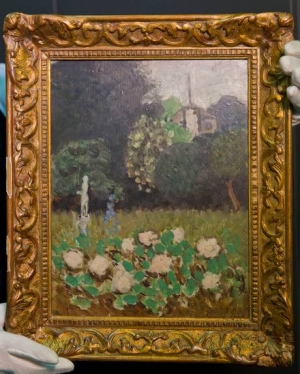
A painting worth $1 million by the French artist Henri Matisse (1869-1954) was recovered in Essex, England. Stolen from the Museum of Modern Art in Stockholm in 1987, the location of Le Jardin (1920) has remained a mystery for more than twenty years.
The discovery occurred when British art dealer Charles Roberts of Charles Fine Art was offered the Matisse painting by a Polish collector. Roberts ran a search on the Art Loss Register (ALR) database, a hub for information regarding stolen artworks, and found Le Jardin listed. Christopher A. Marinello, executive director and general counsel of the ALR, facilitated the painting’s recovery and it is currently being held in the organization’s office before being returned to Sweden in the coming weeks.
Le Jardin was the only artwork stolen during the 1987 burglary when thieves broke through the museum’s front entrance with a sledgehammer and unscrewed it from the wall. The burglars escaped just minutes before private guards arrived to investigate the scene. Following the robbery, the thieves made several attempts to sell the painting back to the museum for an exorbitant sum. Museum officials resisted, knowing that the Matisse painting was too well known to sell on the open market and that it would resurface eventually.
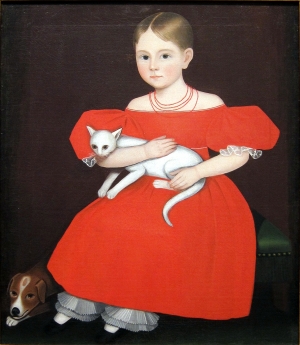
When Ralph Esmerian, owner of the jewelry company Fred Leighton, filed for bankruptcy and was sentenced to six years in jail for fraud in 2011, the American Folk Art Museum felt the repercussions. Esmerian, a prominent donor and former chairman of the institution, had promised the museum 263 works from his illustrious collection. Since Esmerian’s downfall, the museum has been working with a trustee of the case to reach an agreement, which was recently realized.
The settlement between the Folk Art Museum and Esmerian states that the institution is entitled to 53 of the artworks he promised to donate. While the chosen pieces are yet to be specified to the public, they were selected for their exceptional quality and include portraits, needleworks, fraktur, sculpture, pottery, and scrimshaw. The retained works will enhance the museum’s collection and aid its educational mission.
The Folk Art Museum will be forced to part with the other 210 promised works, which will most likely be sold at auction in an effort to settle other bankruptcy estate claims.
|
|
|
|
|